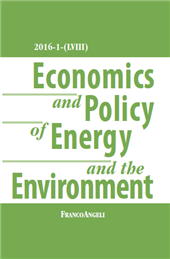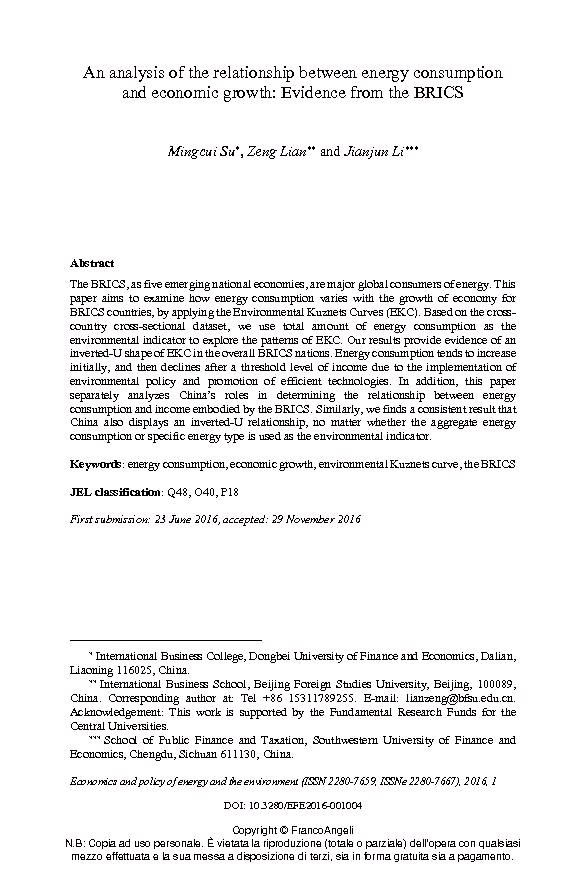An analysis of the relationship between energy consumption and economic growth : evidence from the BRICS
73-89 p.
The BRICS, as five emerging national economies, are major global consumers of energy. This paper aims to examine how energy consumption varies with the growth of economy for BRICS countries, by applying the Environmental Kuznets Curves (EKC). Based on the cross-country cross-sectional dataset, we use total amount of energy consumption as the environmental indicator to explore the patterns of EKC. Our results provide evidence of an inverted-U shape of EKC in the overall BRICS nations. Energy consumption tends to increase initially, and then declines after a threshold level of income due to the implementation of environmental policy and promotion of efficient technologies. In addition, this paper separately analyzes China's roles in determining the relationship between energy consumption and income embodied by the BRICS.
Similarly, we finds a consistent result that China also displays an inverted-U relationship, no matter whether the aggregate energy consumption or specific energy type is used as the environmental indicator. [Publisher's text].
-
Articles from the same issue (available individually)
-
Information
ISSN: 2280-7667
KEYWORDS
- Energy consumption, economic growth, environmental Kuznets curve, the BRICS



